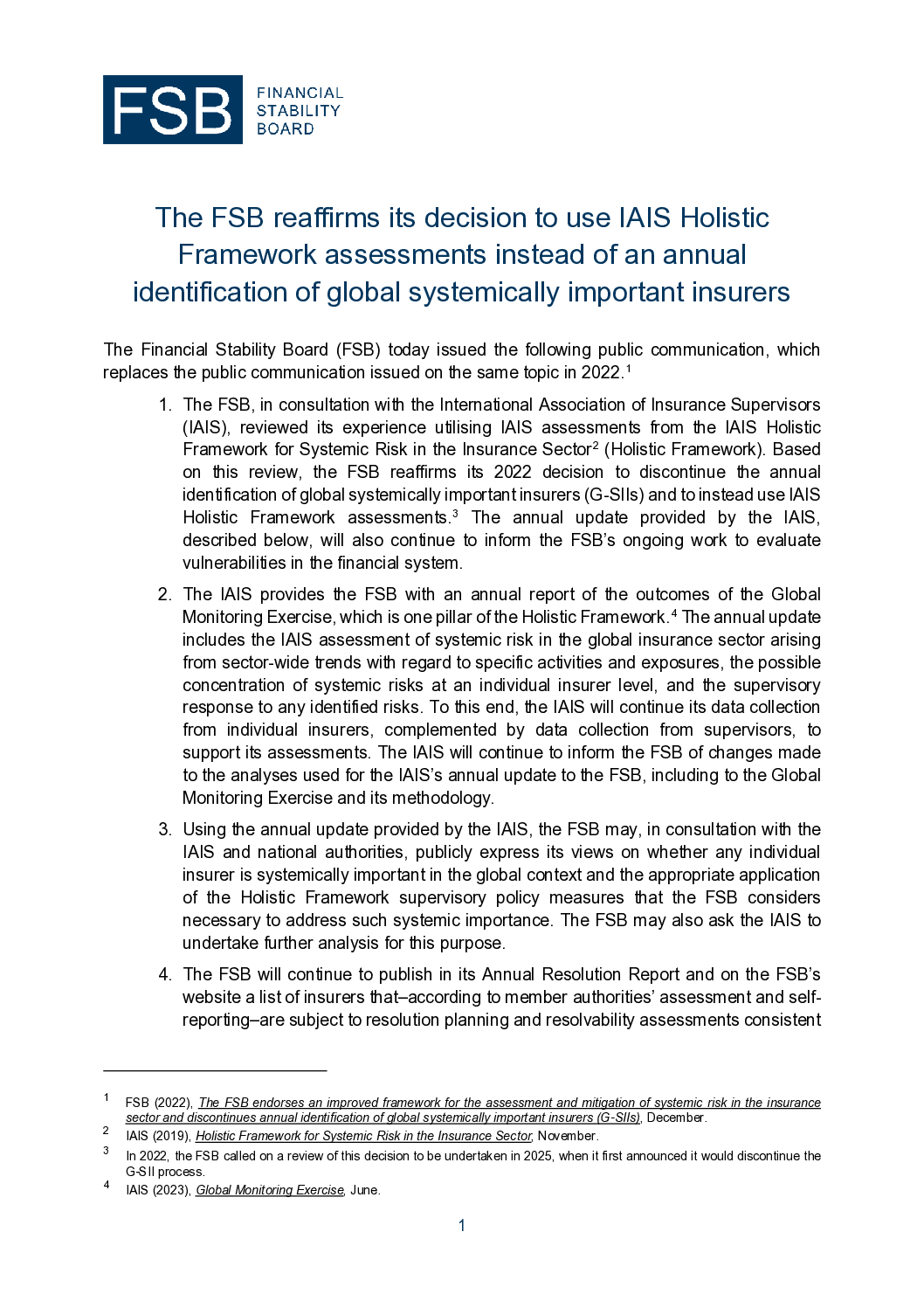Summary of document history
The Key Attributes establish recovery and resolution planning (RRP) requirements as a fundamental component of effective resolution regimes for financial institutions.
The RRP requirements in the Key Attributes for Effective Resolution Regimes apply to “all insurers that could be systemically significant or critical upon failure, and at a minimum to all global systemically important insurers” and “any other firm that its home authority assesses could have an impact on financial stability in the event of its failure.”
The Draft Guidance in this consultation report seeks to support authorities in mitigating potential disruptions to the financial system and the real economy that could result from the stress or failure of certain insurers. It offers a structured approach for authorities to assess which insurers should be subject to RRP requirements.
The Draft Guidance identifies specific circumstances in which RRP requirements should always apply and outlines six key criteria that authorities should consider when evaluating whether an insurer should be subject to RRP requirements:
- Nature
- Scale
- Complexity
- Substitutability
- Cross-border activities
- Interconnectedness
Questions for consultation
In general
- Are the Draft Guidance and comments on the Draft Guidance clear? Where would commenters seek further discussion?
Paragraph 3: Assessment criteria
- How well-suited are the criteria in the Draft Guidance (nature, scale, complexity, substitutability, cross-border activities, interconnectedness) to determining which insurers should be subject to RRP requirements?
- What other criteria, if any, should be in the Draft Guidance for determining which insurers should be subject to RRP requirements? Discuss why any additional criteria should be added and the advantages and disadvantages of doing so.
- What other indicators could be provided as examples of ways that authorities could assess the criteria in the Draft Guidance?
- How could the comments to the Draft Guidance better explain the difference between any of the six criteria?
- How could the comments on the Draft Guidance be made clearer to explain how the six criteria should be applied, while still allowing authorities the flexibility to consider the criteria in a manner that aligns with the specific characteristics of their jurisdictions?
Paragraph 4: Specific circumstances that should necessitate RRP requirements
- Should RRP requirements apply in the two sets of circumstances identified in paragraph 4 of the Draft Guidance, notwithstanding any other facts or circumstances?
- What other circumstances should call for the application of RRP requirements to an insurer, notwithstanding any other facts or circumstances?
- What are possible quantitative or qualitative thresholds concerning the six criteria or some combination of the six criteria that should necessitate RRP requirements, notwithstanding any other facts or circumstances? For example, should the Draft Guidance call for RRP requirements whenever the cross-border activities of an insurer exceed a certain threshold?
Proposed revision to FSB guidance on critical functions
- What are the advantages and disadvantages of revising the FSB’s guidance on the definition of a critical function for insurers by changing the phrase “the sudden failure to provide the function would be likely to have a material impact on the financial system and the real economy” to “the sudden failure to provide the function would be likely to have a material impact on the financial system or the real economy”?
The FSB is inviting comments on this consultation report and the questions herewithin. Responses should be submitted via this secure online form by Friday 6 February 2026.
Responses will be published on the FSB’s website unless respondents expressly request otherwise when submitting their feedback. Questions or materials to supplement online responses may be sent to the FSB Secretariat at [email protected]. Materials sent by email should note the title of this consultation report in the subject line.

